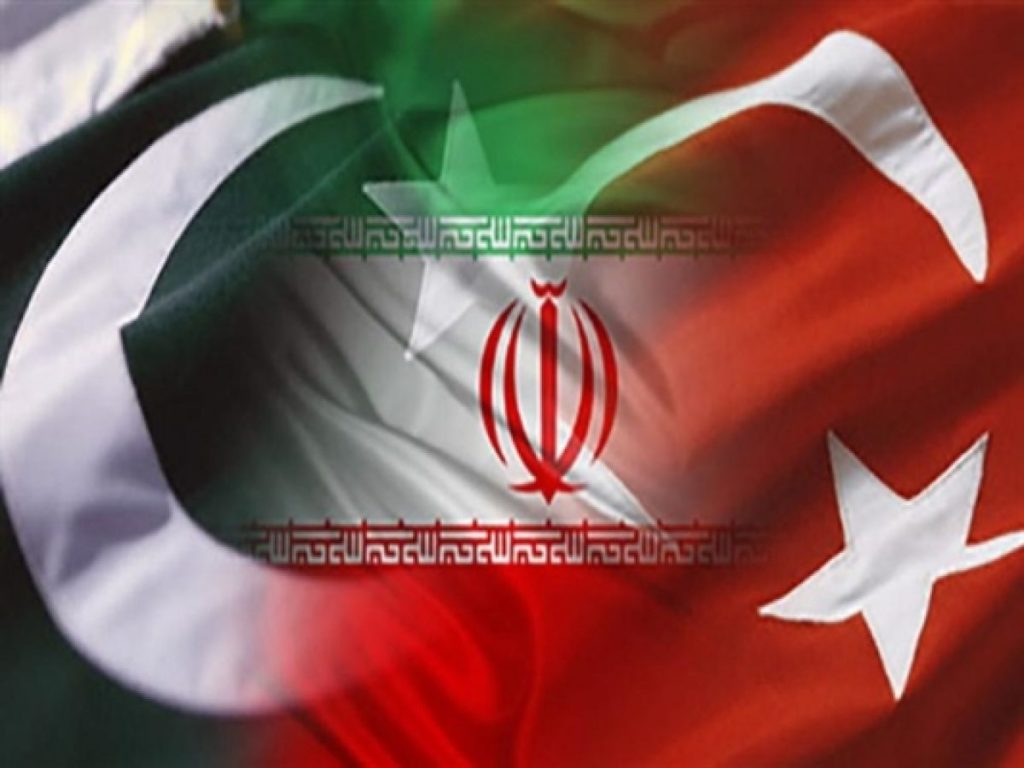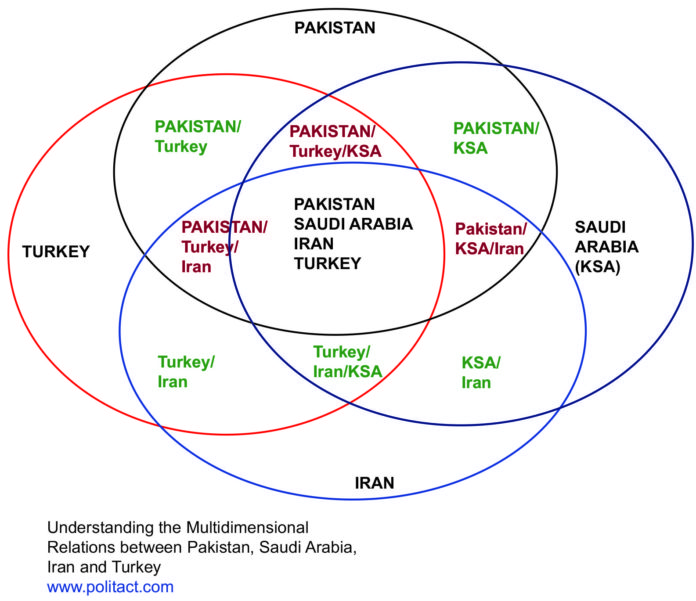Context
Since 9/11, and even before, the world affairs are often linked to significant events that force upon a change from routine, while moving them towards a different direction. The often-quoted assassination of Archduke Franz Ferdinand in 1914 is a case in point that directly led to World War I. Then there are natural catastrophes that can have dramatic results on the conduct of human affairs. The dinosaurs are believed to have been made extinct 65 millions years ago by either an asteroid impact or a comet shower. Our universe itself was created as a result of an accumulation of reactions that caused the big bang 13.8 billion years ago.
While the natural catastrophes are beyond human control, human beings can plan events to have certain impacts and outcomes. The risk is that sometimes such instances have the desired outcomes with known side effects, but at other times, there can be unintended consequences. The killing of Iranian general Qasem Soleimani was just such an event. The question becomes that while Qasem Soleimani, a state actor, had been conducting the activities he is known for a while, why take him out now?
While there are different angles to assess this, PoliTact has attempted to grasp it from the perspective of Core versus Peripheral Islamic world theory. What risks did Qasem Soleimani particularly, and Iran generally, posed at this juncture as it relates to the affairs of Turkey, Saudi Arabia, and Pakistan. May be it was not what he had done up to this point that mattered, but what he could have potentially assembled as an experienced player to challenge the new unveiled Trump’s Middle East Peace Process.
Analysis
As previously noted that the continuing war against terror, plus the situation of Afghanistan, Iraq, Yemen, Syria, and Libya, have played havoc in the regions of South and Central Asia, Middle East, and Islamic Maghreb. This has led to ever escalating political, security and economic flux and instability. In this, the multidimensional relations of Iran, Pakistan, Turkey and Saudi Arabia have taken on an added significance. As the chart demonstrates, the following four segments of this diagram need to be further examined, and juxtaposed vis-à-vis the influences of other global powers.
Pakistan, Turkey, and Saudi Arabia
All three of these are Sunni states and thus have much in common. However, there views diverge when it comes to important matters of the region and beyond, to include Kashmir and Palestinian issue.
Infact, Saudi Arabia, including UAE, is competing with Turkish interests in Syria and Libya. As it relates to the Middle East Peace Process, Turkey, Iran, and Qatar have opposed the Israeli blockade of Gaza and provided economic support to the Palestinians On the other hand, Egypt, backed by Saudi Arabia, facilitated the blockade by closing the crossing points for the Palestinians.
Turkey, in addition to Malaysia, has spoken out against the Indian decision to impose emergency and unilaterally revoking the special status of Kashmir on August 5, 2019. On the contrary, Saudi Arabia and UAE have not taken such a stance and have in fact increased their investments in India.
Reportedly, the Saudis exerted tremendous pressure on Pakistan to keep the nation away from the Islamic Summit held in Malaysia last December. Saudi Arabia feared that the conference of Islamic nations was an attempt by Malaysia and Turkey to develop an alternative body to the Saudi dominated OIC (Organization of the Islamic Conference). The Islamic Summit organized by Malaysia, and backed by Qatar, Turkey and Iran, indicated a preliminary attempt to present an alternative forum. This endeavor was opposed by Saudi Arabia, UAE, Bahrain, and Egypt.
“We are attempting to start small, and if these ideas, proposals and solutions are acceptable and prove workable, then we hope to take them up to the larger platform for consideration,” Malaysian Prime Minister Dr. Mahathir stated. He added, I have suggested that we re-visit the idea of trading using the gold dinar and barter trade among us.
While US, Pakistan relations have improved recently because of its active facilitation in Afghan reconciliation; US-India alignment continues to be a source of tension, to which now Saudi Arabia and UAE have also been added. Turkish-US ties are also not well despite it being a NATO member. This is mainly because of US support of Kurdish forces in Syria, which Turkey considers as terrorists. Moreover, acquiring defense equipment from Russia (S-400 anti aircraft defense system) has further aggravated the ties with the US.
Turkey’s relations with China and Russia can best be described as need based. China and Russia have both supported the Assad regime in Syria while Turkey had initially wanted to remove him power. Turkey has also been critical of the Chinese treatment of Uighurs, however, it looks favorably towards Shanghai Cooperation Organization (SCO) and the One Belt and One Road (OBOR) Initiative. Pakistan is a full member of SCO and one of the critical tributaries of OBOR, China-Pakistan Economic Corridor (CPEC) passes through Pakistan. Media reports indicate Pakistan has attempted to get the Saudis and Turkey involved in the CPEC related projects, while Iran has already indicated its interest on joining.
Comparatively the Saudi-US ties are at the best level, especially why when the Saudis and UAE have complete alignment of interests, including the shift towards Israel.

Pakistan, Saudi Arabia, and Iran
Pakistan and Saudi Arabia have had very close and mutually beneficial ties, especially in the post Iranian revolution era. Economically weak Pakistan has relied on Saudi Arabia to bail it on a number of occasions. On the other hand, Pakistan has provided security assistance to the Kingdom and presently is heading the Islamic Military Counter Terrorism Coalition (IMCTC), founded by the Saudis.
However, the direction of influence is more towards Pakistan. Saudis have used their economic wherewithal, and increasing closeness to the US, to keep Pakistan away from Iran, and now from Turkey. Moreover, it appears that Saudi Arabia and UAE and are now acting in coherence when it comes to the matters of Pakistan, which involves a growing tilt toward India. In all likelihood, the CPEC project, and the development of Gwadar port, will decrease Pakistan’s dependence on the Gulf State and this is likely perceived as a threat. However, the Gulf States will benefit indirectly from the Gwadar port since it would ensure the uninterrupted energy supplies from these states to China incase of tensions in the Indo-Pacific theater.
Any conflict involving Iran will put Pakistan in highly vulnerable position, and force it to choose sides, and therefore it’s actively pursuing to avert war between Saudi Arabia and Iran. This picture, however, cannot be fully grasped without understanding what is at play in the greater Middle East.
Turkey, Iran, and Saudi Arabia the Middle East
Managing tensions over Iran, and preventing a conflict between Saudi Arabia and Iran, entails matter more than just Iran’s nuclear ambitions. Both Iran and Turkey are nations born out of former empires, while the Gulf States were the outcome of opportunist positioning during the World Wars. Nonetheless, the competition between the Persians and the Arabs is nothing new. The Ottoman’s took the brunt of what transpired during the World Wars, and now Erdogan is attempting to reclaim its lost status.
Then there are the left over issues of the Kurds and the fate of Palestine that are complicating the situation. Kurds are divided between Iran, Iraq, Turkey and Syria and are the very center of the present conflict brewing in Syria and Iraq. According to some estimates, 12 million Kurds are living in Turkey, 6 million in Iran, about 6 million in Iraq, and close to 2 million in Syria. All of these states, especially Turkey, are worried about the future of Kurds and their own national integrity, especially because of the US support they have enjoyed.
Then there is growing influence of Iran across the region to include Iraq, Yemen, Lebanon, and Syria. Irrespective of the Shia-Sunni divide, the Iranians have provided support to both the Shia Hezbollah and Sunni-Hamas. At the same time, Iran has also assisted in the fight against ISIS.
Thus, there is an overlay of pressures and tensions in the Middle East that are being exploited by the global powers. In this the Gulf Arabs, to include Egypt and minus Qatar, have been worried about losing face when it comes to sensitive issues of the Middle East Peace Process. They are also concerned about the growing influence of Iran and Erdogan’s Ottomanist ambition that now extends to Africa. In Libya, UAE and Saudi Arabia are supporting Khalifa Haftar while Turkey is backing the UN backed Government of National Accord (GNA).

Pakistan, Turkey and Iran
This is the segment with the most interoperability with in the nations that compose it. Pakistan and Iran are both close to China, while Turkey is increasingly developing cordial ties with it. Pakistan has been a strong ally of the US during the Cold War and in the War against Terror, while Turkey is a NATO member. And one would suppose that this would make US, Turkey, and Pakistan natural allies but that is hardly the case.
Ironically, during the early days of Cold War, Pakistan, Iran, Turkey, and Iraq were all part of CENTO (Central Treaty Organization), also known as Baghdad Pact, created in 1955 and dissolved in 1979. Pakistan, Turkey, and Iran are also part of the Economic Cooperation Organization (ECO), founded in 1985 to promote trade and investment opportunities. ECO was preceded by the Regional Cooperation and Development Organization (RCD) founded in 1965. To deal with the energy crisis, Pakistan-Iran Gas Pipeline was supposed to alleviate some of the energy shortages, but due to sanctions from the US on Iran and pressure from the Gulf nations, the project has hit numerous obstacles and is held in abeyance.
While Iran has tense ties with the US and Saudi Arabia, it does not have such issues with Pakistan and Turkey. However, the ties between Turkey and Iran are not ideal, but they are better than Iran has with any Arab nation. Turkey has continued to receive its energy supplies from Iran and if the Syrian conflict can be managed, this would significantly decrease their divergences.
Conclusion
It is clear from the above discussion that the contiguous Pakistan, Iran, and Turkey segment of the chart has the most potential, and they are increasingly aligned with China. Iran is the lynchpin of this alignment, and other than its nuclear program, that is perhaps the reason for the consistent focus on Iran.
The removal of Qasem Soleimani is likely associated with this apprehension. Iran has developed a network of proxies across the region and has supported them across the Sunni Shiite-Sunni divide. Recent media reports indicate that there may have even been attempts to build bridges with the Muslim Brotherhood. And this would have been ominous for the freshly unveiled Middle East Peace Plan. Iran is likely to pose the most serious challenge to the new plan.
Ironically, the Gulf States of Saudi Arabia and UAE now represent the other side that are opposing any convergences to develop in the Islamic world along the above lines, while failing to take a balanced position on the Middle East Peace Process or Kashmir. Increasingly the nations have to mitigate the tussles between Saudi Arabia/UAE and Iran on the one hand, and Saudi Arabia/UAE and Turkey on the other.




